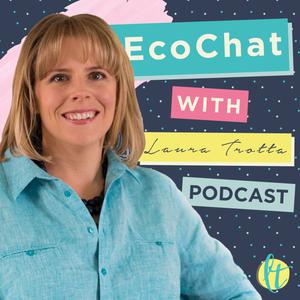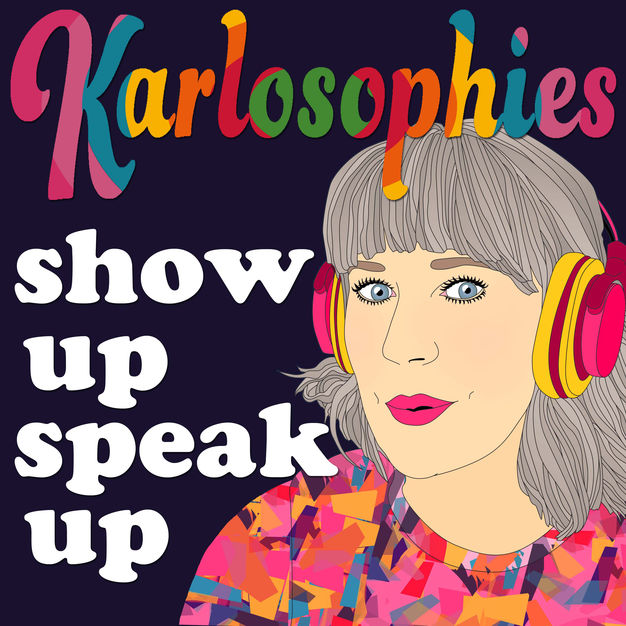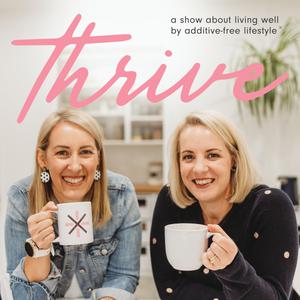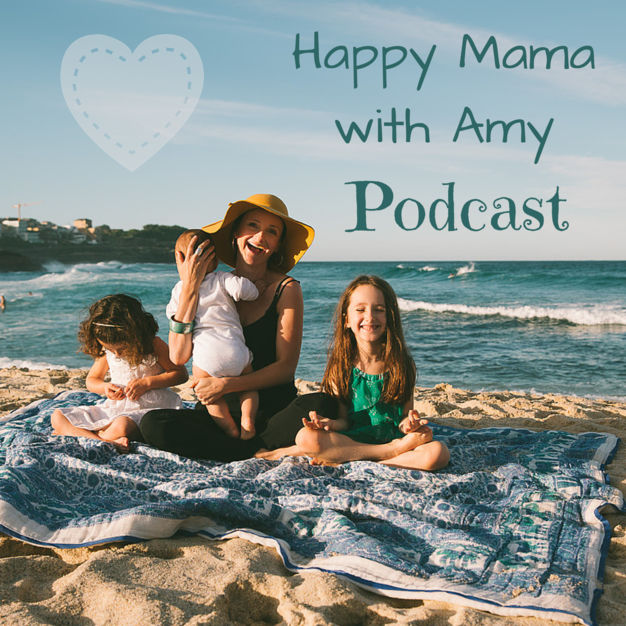
Eco Chat with Laura Trotta Podcast
Laura Trotta
Eco Chat with Laura Trotta
- 49 minutes 24 seconds[178] Sustainable Home Design with Janine Strachan
For most of us, our homes are the biggest investment we’ll make in our lifetime. Decisions we make in the home design process impact not only the durability and longevity of our home but also our home’s sustainability and cost to run.
In this Eco Chat episode I’m joined again by Janine Strachan. Janine explains what sustainable home design is and why it’s important. She also describes the main elements of sustainable home design and how they impact the sustainability of a home.
If you’re in the process of designing or building a home and would like it to be as sustainable and efficient as possible, this episode is a must listen!
Resources:
Sustainable Design Expert Webinar Series
Sustainability in the Suburbs by Laura Trotta – the book! Pre-order now!
27 July 2022, 10:30 pm - 46 minutes 10 seconds[177] Benefits of Tiny Living with Janine Strachan from Tiny House SolutionsTiny Houses are a low impact solution to both the housing crisis and high environmental impact of housing. According to the Australian Tiny House Association, Tiny Houses are moveable dwellings up to 50m2 that are suitable for residential use and can be largely grouped into three categories: on wheels, on skids or shipping containers.
In this episode, Janine Strachan, Founder of Tiny House Solutions, President of the Australian Tiny House Association (ATHA) and host of ‘Tips from the Tiny House Guru’ podcast shares what’s driving the growth in the Tiny House Movement, advantages and disadvantages of living in a tiny house, costs and legalities associated with building a tiny house and her best advice for those looking to build and live in a Tiny House.
31 May 2022, 7:30 am - 22 minutes 20 seconds[176] School Strike 4 Climate with Lola Stravoskoufis – Eco Chat with Laura Trotta
Lola is a Year 9 student from Exeter in the Southern Highlands region of NSW. She marched as a Year 6 student in the large student climate strikes in 2019 and subsequently joined the School Strike 4 Climate movement. She now leads the School Strike 4 Climate group in her regional town and is actively meeting with her local candidates for the upcoming Federal election to ensure the voice of youth is heard loud and clear.
In this episode my son Matthew will interview Lola, uncovering the information he needs to include in his school assignment on someone who is using their voice for good, but also educating himself more in how students, not too much older than him, are making a really big impact in climate change awareness.
Lola will share what the School Strike 4 Climate movement is and why she decided to join, when and how it was founded, and the impact the movement is having.
Resources:
30 April 2022, 1:52 pm - 31 minutes 52 seconds[175] Ethical Everyday Banking with Beyond Bank Sustainability Manager Kate Carrol
We all need a bank to help us manage our money. But what if “who” we banked with made a difference?
What if your everyday banking was yet another avenue to create a better future for humanity?
What if your everyday banking could create a better global environment in the future?
What if your bank poured its profits into social and environmental initiatives in the community it operated, rather than paying returns to shareholders?
WHO you bank with CAN make a difference. A big one!
In this Eco Chat episode I’m joined by Sustainability Manager of Beyond Bank, Kate Carroll.
Beyond Bank Australia is a local customer-owned and B Corporation bank. Kate works across the business to help create positive impact for people and planet whilst also delivering value for the organisation.
Kate will share why she believes people should care about who they bank with, what it means for a bank to be customer-owned and a B Corporation, and what you should look out for when making the switch to a more ethical bank.
Resources:
Self Sufficiency in the Suburbs
Disclaimer: Laura Trotta is not a financial planner. Any investment advice given by Laura Trotta (or by any other person through this Website) is based on that person’s opinion and their general experience, but not your specific case. A such, you should always seek independent financial advice for your particular circumstances before acting on information that is published or recommended on this Website.
13 April 2022, 12:01 am - 38 minutes 17 seconds[174] Discover Ethical Superannuation with Verve Super Co-founder Christina HobbsSuperannuation is incredibly important to ensure you’re comfortable financially in retirement. But what if superannuation had another purpose?
What if superannuation was an avenue for you to create a better future for humanity?
What if superannuation was an avenue for you to create a better global environment in the future?
What if could easily divest your superannuation investments away from fossil fuels, guns or gambling and instead invest in renewables, micro-finance for women-run businesses and social housing?
Well you can!
In this Eco Chat episode I’m joined by co-founder and CEO of Verve Super, Christina Hobbs.
Christina is an experienced Board Director in the superannuation industry and a former Deloitte Management Consultant. Prior to founding Verve, Christina worked for over a decade as a humanitarian and financial inclusion expert for the United Nations. She is a former Board Director of the Global Women's Project and a published author on gender equality.
Christina will explain what ESG superannuation funds are, how you can make the switch to an ethical fund and why she co-founded Verve Super, Australia's first ethical superannuation fund tailored for women.
Disclaimer: Laura Trotta is not a financial planner. Any investment advice given by Laura Trotta (or by any other person through this Website) is based on that person’s opinion and their general experience, but not your specific case. A such, you should always seek independent financial advice for your particular circumstances before acting on information that is published or recommended on this Website.
Resources:
15 March 2022, 9:38 pm - 34 minutes 24 seconds[173] Discover Ethical Investing with Life Sherpa’s Christopher Zinn – Eco Chat with Laura TrottaWhether it’s eating organically grown food, avoiding fast fashion or divesting your financial investments from fossil fuels, tobacco or companies with a track record of modern slavery, conscious consumers and investors have long voted with their money and changed the world in the process.
Investing your money can be complex at the best of times. Investing your money ethically can be even more complicated, with social washing* and greenwashing* rife.
In this Eco Chat episode I’m joined by Christopher Zinn. Christopher is a personal finance expert and consumer campaigner at Life Sherpa. He is passionate about ethical investing and believes that empowering consumers with reliable and understandable advice and information they can implement now makes life’s goals more achievable.
Christopher will share the difference between ethical and conventional investing, how to get started with ethical investing and what to look for in an ESG superannuation fund.
*Social washing = a company making misleading claims about the social responsibility of its products or services to position itself in a better light for economic gains and public image.
*Greenwashing = a company making misleading claims about the sustainability credentials of its products or services to position itself in a better light for economic gains and public image.
Resources:
15 February 2022, 8:45 pm - 15 minutes 6 seconds[172] How to Reduce Food Waste at Christmas
The most wonderful time of the year is also the most wasteful, but that needn’t be the case! In this episode I share five ways you can reduce your food waste this Christmas so the season is lighter on your wallet, waistline and our precious planet.
Resources: Seasons Greenings e-guide
15 December 2021, 12:02 pm - 32 minutes 29 seconds[171] Engineering Solutions to Climate Change
If you’ve been feeling down about the state of the global environment, particularly after COP26 in Glasgow, this episode is for you. I’m sharing a presentation I delivered to around 200 doctors last month at the Doctors for the Environment iDEA 2021 conference. I was invited by Dr Kate Wylie to share a message of innovation and progress so conference attendees could leave the conference with a feeling of hope. I hope the presentation has a similar impact on you too.
21 November 2021, 11:56 am - 46 minutes 14 seconds[170] How Climate Risk is Impacting Home Insurance (and Valuation) Costs
There’s plenty of factors to consider when investing in a home. Proximity to schools, shops, health services, family and public transport are some of the key considerations. Smart investors of today are factoring in another consideration – climate change risk – and for good reason.
Climate change risk is impacting the valuation and insurance cost of Australian residential properties and is expected to become more important as time marches on, and the impacts of climate change become more visible. For this reason it make sense to obtain a climate risk report at the same time as you conduct your building and pest inspections.
In this episode, Karl Mallon from Climate Valuation shares how you can assess the climate risk to your home and steps you can take to ensure that your investment is physically and financially sound.
Resources:
2 November 2021, 12:15 pm - 24 minutes 42 seconds[169] How Home Battery Storage Systems Work
If you’re looking to reduce your household carbon emissions, you really can’t go past installing a home solar photovoltaic system with battery storage. But with so many dealers and installers out there, and with such a high investment cost, where do you even start?
In Part 1 of this Home Energy feature, Bernie Kelly from bidmysolar shared how home solar photovoltaic systems work, their cost and their advantages and disadvantages.
In Part 2, Bernie kindly shares how home battery storage systems work, their cost, how long they last and traps you should be aware of before you make the investment.
Resources:
3 September 2021, 2:30 am - 39 minutes 25 seconds[168] How Home Solar Systems Work
If you’re looking to reduce your household carbon emissions, you really can’t go past installing a home solar photovoltaic system with battery storage. But with so many dealers and installers out there, and with such a high investment cost, where do you even start?
In Part 1 of this Home Energy feature Bernie Kelly from bidmysolar shares how home solar photovoltaic systems work, their cost and their advantages and disadvantages.
Stay tuned for Part 2 where Bernie will share how home battery storage systems work, their cost, how long they last, and traps you should be aware of before you make the investment.
Resources:
24 August 2021, 9:30 pm - More Episodes? Get the App
Your feedback is valuable to us. Should you encounter any bugs, glitches, lack of functionality or other problems, please email us on [email protected] or join Moon.FM Telegram Group where you can talk directly to the dev team who are happy to answer any queries.
 Karlosophies
Karlosophies
 Thrive by Additive-Free Lifestyle
Thrive by Additive-Free Lifestyle
 Conversations with Lisa
Conversations with Lisa
 Happy Mama with Amy
Happy Mama with Amy